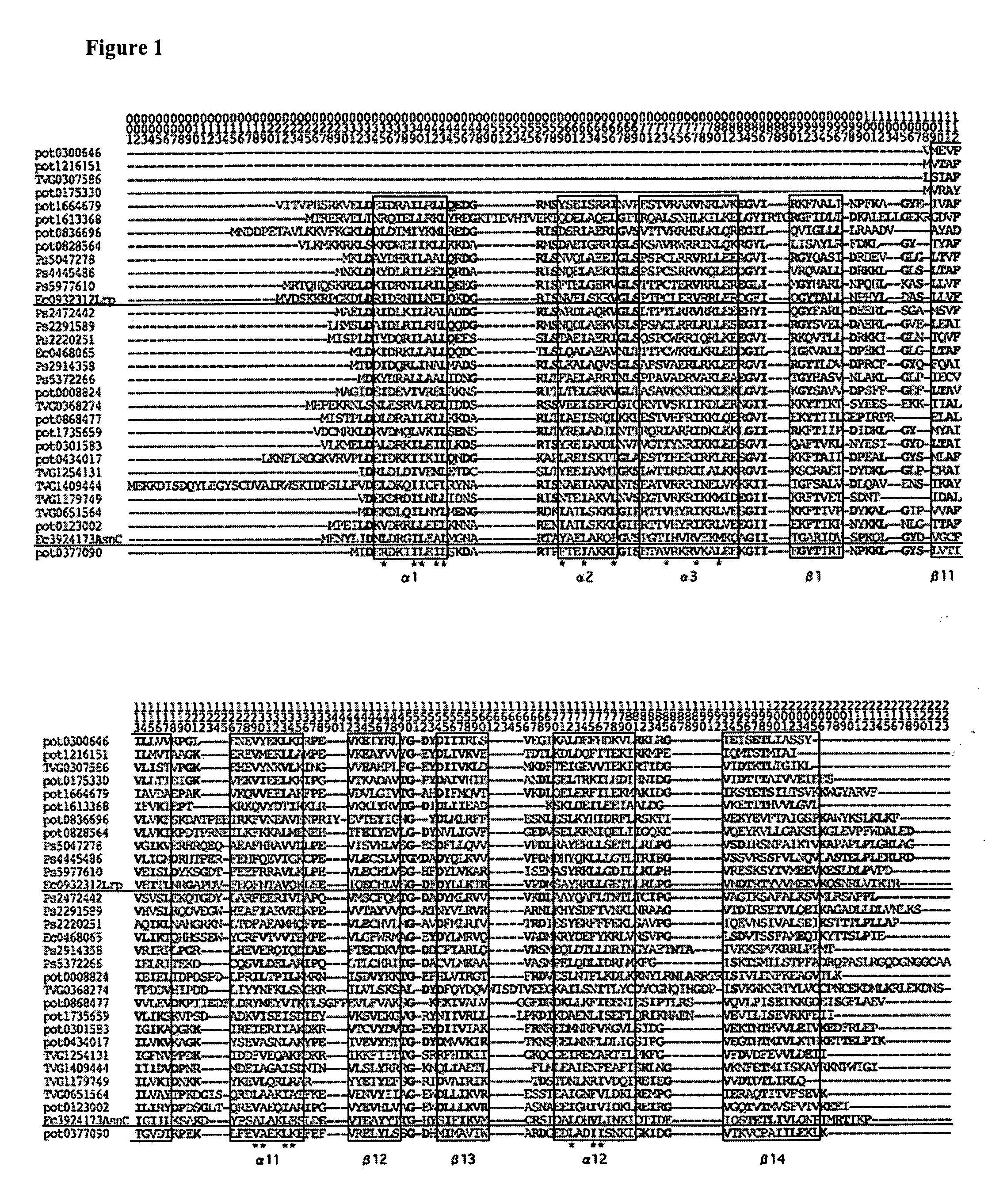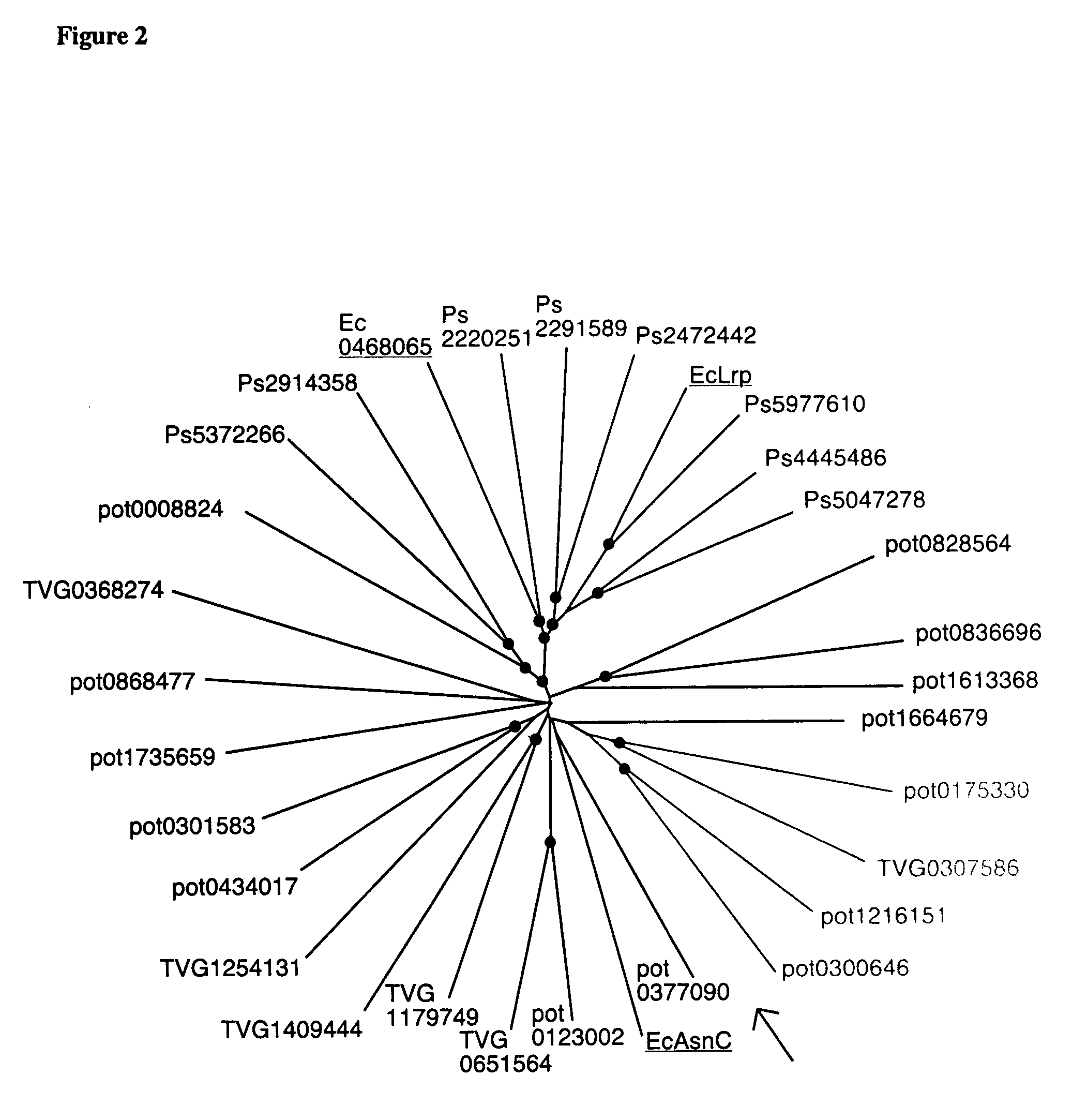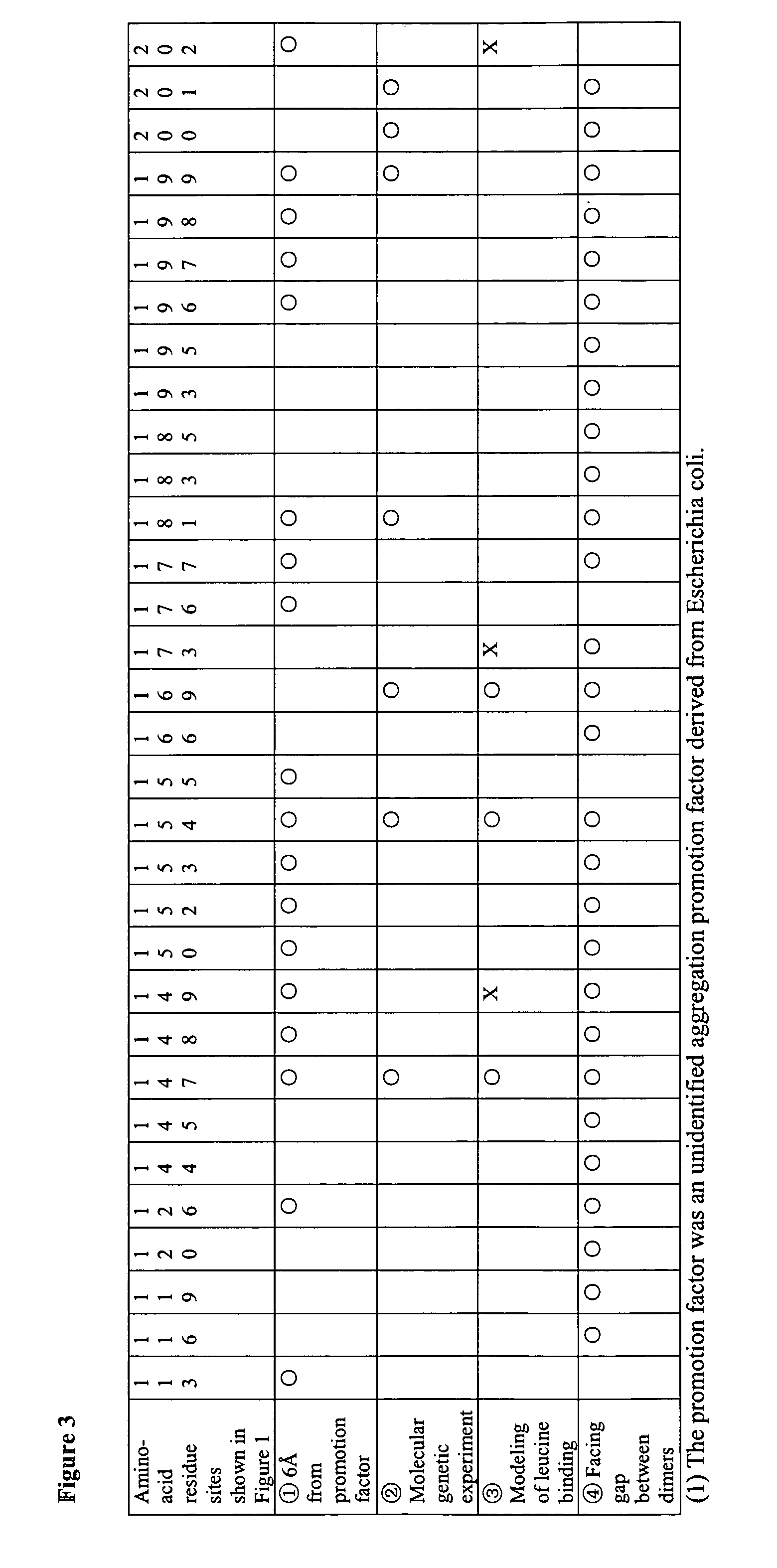Method of screening for antimicrobial agents
a technology of antimicrobial agents and screening methods, which is applied in the field of screening methods for antimicrobial agents, can solve the problems of not only developing countries, serious inside hospital infections, and development of effective agents, and no evidence has been found to prove direct involvement of ffrps in multi-drug resistance or opportunistic infectivity of organisms
- Summary
- Abstract
- Description
- Claims
- Application Information
AI Technical Summary
Benefits of technology
Problems solved by technology
Method used
Image
Examples
example 1
Identification of P. aeruginosa FFRPs
[0081] All open reading frames (ORFs, each formally codes for 50 or more amino acid residues between the start and stop codons) found in the complete genomic sequence (Stover, C. K. et al., 2000, Nature 406, 959-964) of the standard strain (PAO1) of P. aeruginosa were identified and translated to amino acid sequences. ORFs of P. aeruginosa resembling the FFRPs of E. coli (genomic sequence of E. coli K strain: Blattner, F. R. et al., 1977, Science, 277, 1453-1474), or FFRPs of archaea, Pyrococcus sp. OT3 (JCM 9974) or Thermoplasma volcanium (these FFRPs listed in Suzuki, M et al., 2003, Proc. Japan Acad. 79B, pp. 92-98), were identified using the FASTA program (Peason, W. R., and Lipman, D. L., 1988, Proc. Natl. Acad. Sci. USA, 85, 2444-2448). A low Z score of approximately 180 was used as the threshold so that no FFRP was overlooked.
[0082] The amino acid sequences of the candidates of P. aeruginosa FFRPs identified as above and the amino acid s...
example 2
Identification of the Phylogenetic Relation Between FFRPs
[0086] Without changing the correlation between residues in the multiple alignment in FIG. 1 and by using the PHYLIP package, FIG. 2 was made showing similarities between FFRPs. In FIG. 2, two FFRPs related more closely are separated by a shorter distance, this distance being defined as the sum of partial distances measured from the node separating the two FFRPs to the respective FFRPS. For example, the protein related closest to E. coli Lrp is Ps5977610 from P. aeruginosa.
[0087] A bootstrap value was calculated for each node in FIG. 2. A bootstrap value is a measure for evaluating degree of homogeneity of data used to deduce a conclusion: a conclusion needs to be unbiased, supported by essentially the whole of the data set. This value defines the number of times the same diversification at a node is concluded out of, for example, 1,000 trials, while effectively changing the weight given to each of the amino acid positions u...
example 3
Identification of Ligand-Binding Site
[0089] By using correlation of amino acid sequences between P. aeruginosa FFRPs and pot1216151 shown in FIG. 1 and by using findings obtained by analyzing the crystal coordinates of the archaeal FFRP, pot1216151 (see REFERENCE EXAMPLES and Patent Application No. 2001-384683), in total thirty-two amino acid positions were identified for each of the FFRPs from bacterial species as potential targets while developing a pharmaceutical agent (FIG. 3). The crystal structure of pot1216151 used for this identification is the only 3D structure of any FFRP determined to date in complex with a ligand. It is the single FFRP structure where the positions of the side chains of amino acid residues are determined precisely. The identification of these positions was carried out by four different approaches described below. [0090] i) In the crystal of pot1216151, each octamer was found in complex with two molecules of an unidentified assembly promotion factor (i.e...
PUM
| Property | Measurement | Unit |
|---|---|---|
| Fraction | aaaaa | aaaaa |
| Structure | aaaaa | aaaaa |
Abstract
Description
Claims
Application Information
 Login to View More
Login to View More - R&D
- Intellectual Property
- Life Sciences
- Materials
- Tech Scout
- Unparalleled Data Quality
- Higher Quality Content
- 60% Fewer Hallucinations
Browse by: Latest US Patents, China's latest patents, Technical Efficacy Thesaurus, Application Domain, Technology Topic, Popular Technical Reports.
© 2025 PatSnap. All rights reserved.Legal|Privacy policy|Modern Slavery Act Transparency Statement|Sitemap|About US| Contact US: help@patsnap.com



